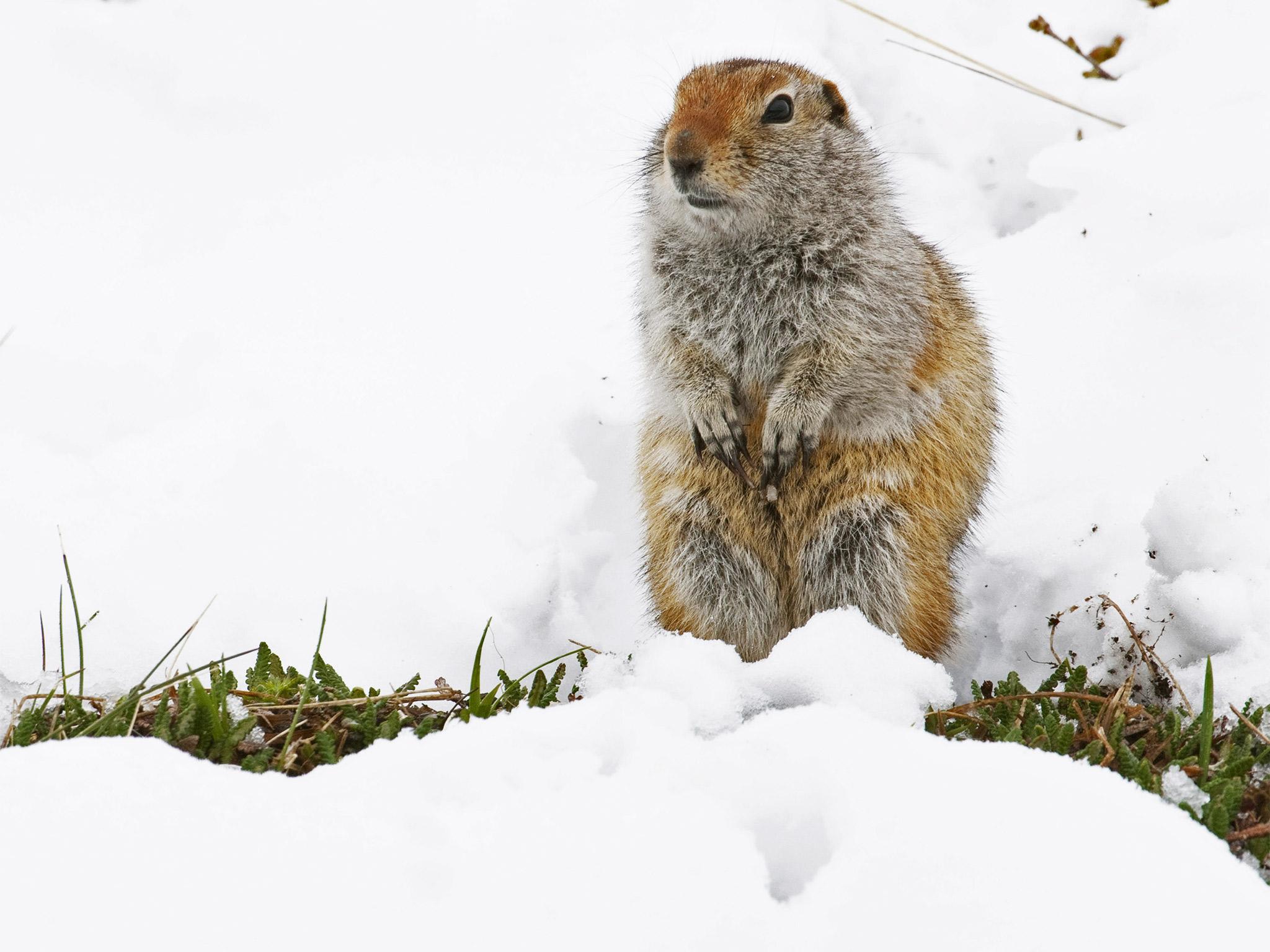Arctic squirrels blamed for climate change damage

Your support helps us to tell the story
From reproductive rights to climate change to Big Tech, The Independent is on the ground when the story is developing. Whether it's investigating the financials of Elon Musk's pro-Trump PAC or producing our latest documentary, 'The A Word', which shines a light on the American women fighting for reproductive rights, we know how important it is to parse out the facts from the messaging.
At such a critical moment in US history, we need reporters on the ground. Your donation allows us to keep sending journalists to speak to both sides of the story.
The Independent is trusted by Americans across the entire political spectrum. And unlike many other quality news outlets, we choose not to lock Americans out of our reporting and analysis with paywalls. We believe quality journalism should be available to everyone, paid for by those who can afford it.
Your support makes all the difference.Rodents have been accused of everything from the Black Death to electrical fires over the centuries – now climate change can be added to the long list of mishaps for which they are to blame.
Two new studies have found that the Arctic ground squirrel and the beaver are contributing far more to global warming than previously thought, suggesting that they are a major contributor to climate change.
The first study, by the Woods Hole Research Centre in Massachusetts, reveals that Arctic squirrels are hastening the release of the greenhouse gases methane and carbon dioxide by melting the permafrost that has kept dead animals and vegetation preserved underground for years.
They do this, in part, by warming the frozen soil when they dig burrows, helping to accelerate the melting of the permafrost.
Their faeces and urine further contribute to the process, fertilising the soil, which nourishes the microbes that create methane by decomposing the dead organic matter and releasing it into the atmosphere.
“It certainly has a bigger impact than we’ve considered and it’s something we will be considering more and more going into the future,” said Dr Sue Natali, of the Woods Hole Research Centre. “Carbon has been accumulating in permafrost for tens of thousands of years. The temperature is very cold, the soils are saturated, so that when plants and animals die, rather than decompose, the carbon has been slowly, slowly building up.”
When the permafrost melts microbes gain access to these carbons that were previously out of bounds because they were frozen. The Arctic permafrost, where deep layers of soil remain frozen all year round, is estimated to contain 1,500 billion tons of carbon – about twice as much as is currently contained in the atmosphere.
Climate scientists are extremely concerned about melting permafrost, which they say could create a “feedback loop” of rising temperatures and increased melting.
A separate study found that the beaver is playing an increasing part in climate change because the dams they build for shelter create shallow, stagnant ponds of water which allow biological material to build up on the bottom of the river.
This is broken down by microbes and released into the atmosphere in the form of methane.
The production of methane is accelerated because stationary pools of water contain much less oxygen than a flowing river interacting with the atmosphere and microbes thrive in low-oxygen environments.
The study, by the University of Saskatchewan in Canada, estimates that beavers are indirectly producing 200 times more methane today than they were in 1900, when fur hunting had largely wiped out the populations in North American, Europe and Asia.
The population rebound, on the back of a conservation drive, has greatly increased the number of “beaver ponds”. They are now responsible for pumping 881,000 tons of methane into the atmosphere each year, according to the research, published in the journal Ambio.
Something to chew on: Impact of ruminants
Rodents and squirrels are not the first animals to be blamed for contributing to climate change – ruminants have long been known to play a role.
The biggest culprit in this department is the cow, which through a combination of burping and breaking wind, and by virtue of its enormous population, produces mind-boggling quantities of methane – estimates vary, but a single cow is thought to produce anything between 250 and 500 litres of methane a day. That’s 55 to 110 gallons.
Overall, the livestock ruminant sector, which is mainly cows but includes animals such as sheep, goats and buffalo, produces 18 per cent of the world’s greenhouse gases, a bigger contribution to climate change than transport.
Join our commenting forum
Join thought-provoking conversations, follow other Independent readers and see their replies
Comments